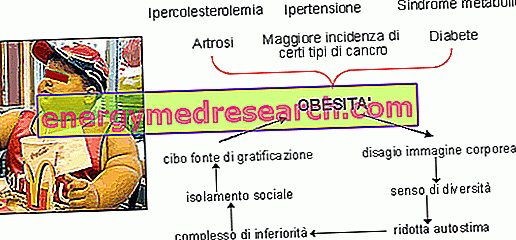What is that
Arab waxing is a method of hair removal that is having great success in the aesthetic field. This success is most likely due to the fact that - compared to the classic waxing - this form of hair removal is more delicate and more economical. In fact, the pasta used in Arab waxing can be prepared at home with commonly used ingredients .
THE

The origins of Arab waxing seem to be very ancient; in fact, many argue that it was the first waxing to be used in history starting from 1900 BC Even, there are those who claim that this form of hair removal was even used by Queen Cleopatra.
Features
Characteristics and Composition of Arabian Wax Paste
Arab waxing is performed using what could basically be called a paste made with sugar, water and lemon juice. To these basic ingredients it is possible to add further ingredients according to the properties that are to be given to the final product. For example, you can add honey to take advantage of the emollient action.
Ready-to-use Arabic waxing paste is available in various perfumeries and in the most supplied supermarkets. However, some of the commercially available Arabic waxing pastes - in addition to sugar - also contain a part of wax, essential oils or other ingredients. For this reason - to be sure of buying the real Arab waxing paste - it is a good rule to always read the label and the list of ingredients very carefully.
Alternatively, it is possible to use homemade pasta.
Did you know that ...
Given the great success of Arab waxing, this method of hair removal is also proposed by various beauty centers, where it is performed professionally.
Do-it-yourself
Do-It-Yourself Recipe for Arab Waxing
Although Arab waxing requires the use of commonly used ingredients, preparing pasta to be able to do it is not as simple as one might think. However, since the necessary ingredients are relatively inexpensive, there are many people who try their hand at preparing this pasta.

- Mix the three basic ingredients (sugar, water and lemon juice) in the proportions indicated above and, if desired, add two tablespoons of honey.
- Heat the mixture thus obtained over low heat until a homogeneous golden-colored paste is obtained, similar to the color of honey.
- Allow the mixture to cool. Arab waxing paste, in fact, must not be too hot, since it must be applied at a temperature of 35-36 ° C.
- Once cooled, it is possible to apply the paste - following the direction of hair growth - directly with the fingers, or with the help of a wooden stick. Then, proceed by tearing the dough in the opposite direction to the direction of hair growth, as if you were performing a normal wax.
The difficulty of preparing Arab waxing paste at home lies in obtaining the right consistency . In fact, pasta should not be neither too liquid nor too hard, since in both cases both application and removal would be very difficult.
Advantages
What are the advantages of Arab waxing?
The use of Arab waxing seems to have many advantages over traditional waxing, such as:
- Greater delicacy: in fact, it is believed that the sugar present in the Arab waxing paste is able to stick to the hair without affecting the skin. Therefore, when the dough is torn, only the hair is removed and the skin is not damaged, as it can happen with the use of the classic wax.
- Any remaining pasta can be easily removed using a little warm water.
- Reduces the risk of allergies, although we can not completely exclude the appearance of hypersensitivity reactions in individuals allergic to any of the ingredients of pasta.
- It allows the removal of shorter hairs (1-3 millimeters), which hardly happens with traditional waxing.
- Reduces the risk of burns, as it can be applied at low temperatures.
- Reduces the risk of ingrown hairs.
- It's cheap, especially when it's homemade.
Disadvantages
Disadvantages and Contraindications of Arab Waxing
As the Arab waxing has several advantages, the opinions on its real effectiveness are quite conflicting. In fact, many people believe that this form of hair removal is less painful than classic waxing, but at the same time they believe that it is a less effective method and that the result is less lasting over time. Of course, these assessments are entirely subjective and may vary from individual to individual. Therefore, as with most beauty treatments, what may be an advantage or strength for some individuals may be considered a disadvantage by others.

- Immediately before or immediately after exposure to the sun, as the skin - put to the test by UV rays and by the tearing of the dough - could be affected and irritated;
- In the case of injured, irritated and / or inflamed skin;
- In people suffering from skin diseases (in this case it is good to ask the doctor's advice before undergoing any epilatory technique).



